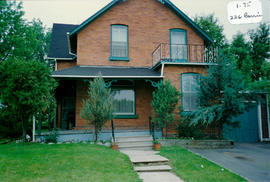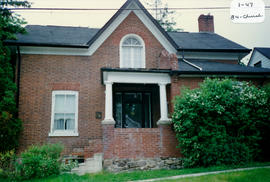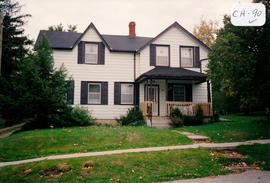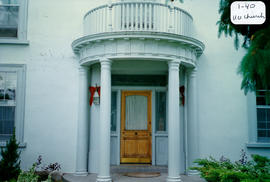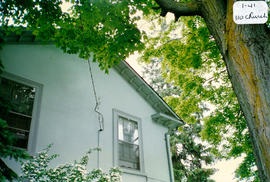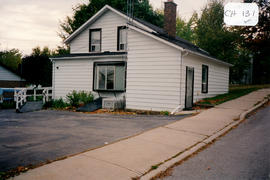220 Barrie Street - The Clarence Wood House
- CA BWGPL GJ-HB-2017-03-15-10
- Unidad documental simple
- 1995
Parte deGeorge Jackson fonds
The Clarence Wood House is located mid-block on the west side at 220 Barrie Street. It was built around 1880 in the Gothic Revival style. This structure was the home of Clarence and Bessie Wood many years ago.
The 1½-storey, ‘L’-shaped building has large window openings with high floor to ceiling heights and a medium-pitched, gable roof. There are decorative, wooden brackets at the front porch and decorative trim at the gable. The dichromatic brick quoins, belt course pattern, and window headers (with keystones) are not original. They are, however, considered to be in keeping with the age of the building. Replacement brick at the window heads appears to have twentieth-century steel reinforcement. The house has brick masonry construction. According to the 2000 inventory, the projected greenhouse bay window and skylights are unsympathetic with the original design. It also notes that other renovations are somewhat in keeping with the original building design. (1, 3)
Sin título


